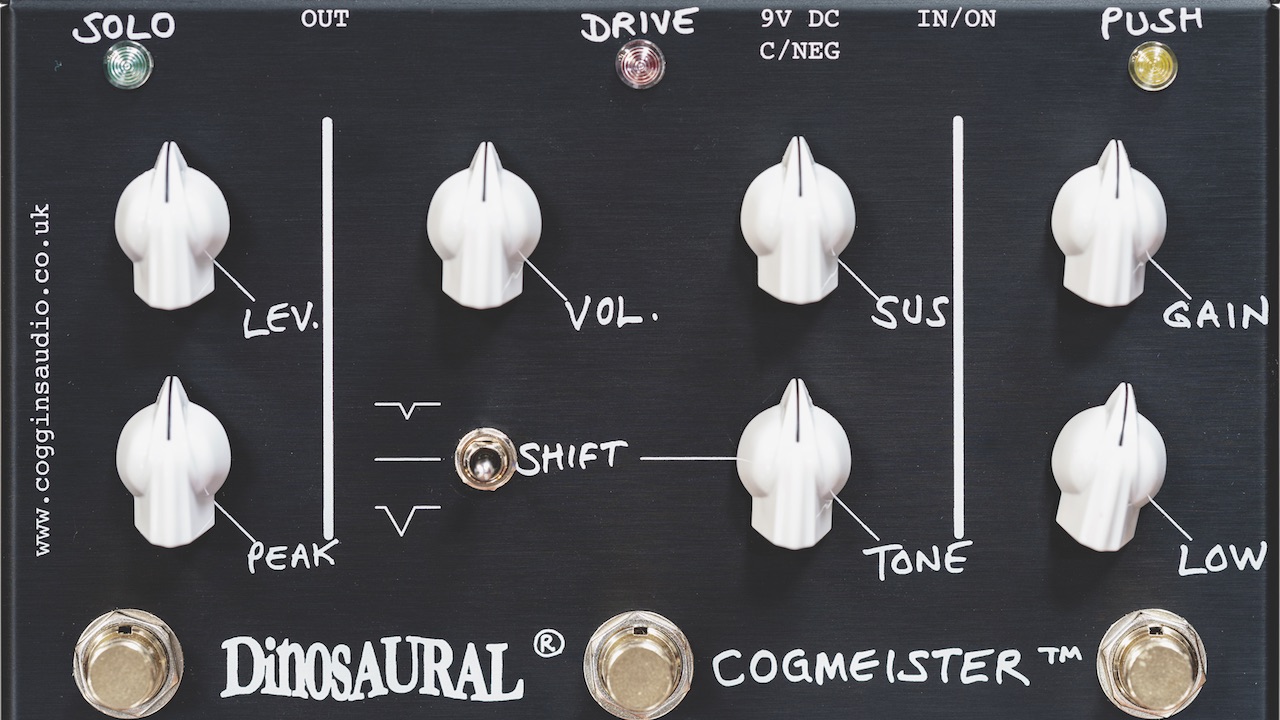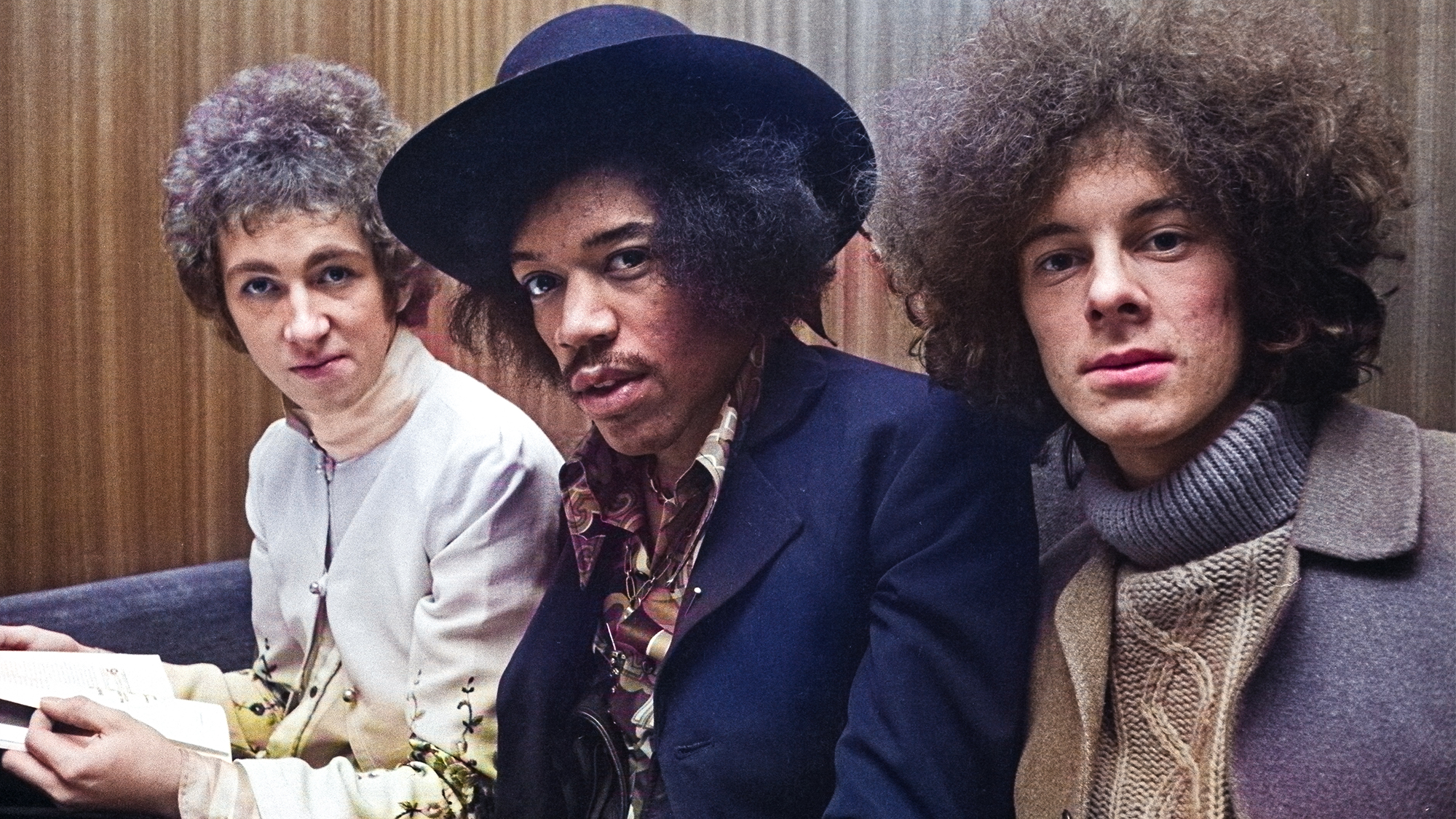GuitarPlayer Verdict
This just shows how a great circuit designer can still squeeze new levels of tone and performance out of seemingly long maxed-out hardware
Pros
- +
Lush, clear, dynamic overdrive presented in three extremely useful stages, chained or used individually
Cons
- -
The foot switches on the Push and Solo channels might be a little close to the knobs for some big-toed players
You can trust Guitar Player.
A certified legend in effects pedal design, Dan Coggins was in on the ground floor of the boutique boom, brainstorming the circuits behind some of the most collectible small-shop stompboxes ever for Lovetone, which he co-founded in 1995.
Later, he provided valuable consulting, and eventually several original designs, for ThorpyFX. If his name isn’t familiar, that’s probably because he’s often done his thing behind the scenes, and is a rather humble and understated guy.
Between Lovetone and ThorpyFX, however, Coggins marketed a handful of pedals under his own Dinosaural brand in Oxfordshire, England, before departing the pedal business for a few years to work as an electrical engineer in magnetometer R&D and high-voltage X-ray and laser-pulse electronics. Serious stuff, indeed!
The Cogmeister yields myriad combinations of lusciously tactile and tube-like tones
Recently, though, he resurrected the Dinosaural brand under the Coggins Audio Ltd. umbrella to market the new Cogmeister triple boost/overdrive pedal. Described by Coggins as “with all due modesty, my gain masterpiece,” the Cogmeister comprises three independent yet highly chainable and gain-stageable boost and overdrive circuits, all driven by a single nine-volt battery or an external power supply.
From right to left — the order in which the channels are chained within the Cogmeister Overdrive — those circuits are:
• Push, a single-silicon transistor booster based loosely on the original Dallas Rangemaster Treble Booster, with its gain knob joined by a low control that adds back low frequencies as you rotate it clockwise, thereby remediating the effects of the original circuit’s fixed high-pass filter.
• Drive, a transistor-based overdrive designed to emulate tube-amp clipping, with controls for sustain (gain), tone and volume (output), plus a three-way shift switch to select slight mid scoop, bigger lower-mid scoop or flat mids.
All the latest guitar news, interviews, lessons, reviews, deals and more, direct to your inbox!
• Solo, a Zener-diode clipping circuit designed to do everything from provide a midrangey solo boost to its own breed of relatively transparent (though EQ-dialable) clipping. A level knob governs the output, while the peak control offers a progressive midrange bell-curve emphasis centered between 1.8kHz and 2kHz, depending upon the setting.
To understand how they work together as a trio, think of the middle Drive stage as your low- to medium-gain tubey overdrive, or an always-on tonal foundation; the third Solo stage as the lead boost that helps it cut through the mix when needed; and the first stage, Push, as the front-of-chain booster that makes it all hotter and hairier when you need more dirt in the brew.
To address the elephant in the room, yeah, there are already a lot of overdrives out there, and plenty of good multichannel renditions as well. So, what inspired Coggins — a designer arguably best known for several extreme Lovetone filter and ring modulator pedals — to make a triple-boost/OD his new masterpiece?
“Back in around 2010, I was playing regular gigs in a local covers band with a wide repertoire,” he tells GP, “yet we often found ourselves playing in very cramped spaces. I had the idea of designing a single three-in-one drive pedal to fit within the 120-degree legs of my mic stand.

"It was based upon how I was chaining as few pedals together as possible to meet my needs: I needed a clean/dirty option, a pre-boost for more sustain and/or ‘bite,’ and a solo boost placed after those two to lift the overall level for solos and/or riffs, particularly voiced to catch the human ears’ sensitivity to midrange frequencies.
“However, it was over a decade before I finally got around to prototyping and building it — during one of the U.K. Covid-19 lockdowns — and by then, in my mind I’d percolated and distilled the individual circuits to do exactly what I wanted.
"I built the system to do the basic job described above when all knobs were set to 12 o’clock, and I was pleasantly surprised at how well the sections worked together. Not only like that, but even more so when trying the more diverse and extreme settings, something I hadn’t quite anticipated!”
The fact that the Cogmeister proved instantly so unswitch-offable in the face of a dozen other top-notch overdrives speaks volumes
Coggins quickly determined that such a pedal was too useful to keep to himself and decided to take the Dinosaural name out of retirement to market the Cogmeister as his one and only new offering. His main gig remains as analog design engineer for ThorpyFX Ltd., with whom he’s collaborating on the Cogmeister’s manufacture.
Tested with a Telecaster and a Les Paul into a tweed Deluxe-style 1x12 combo and a 65amps London head and 2x12 cab, the Cogmeister quickly revealed the utter success of its three-channel design. It’s simply one of the most seamless, natural and organicsounding solid-state overdrive pedals I’ve ever played.
Each stage manages to be both impressively transparent and string-to-string clear, yet also very characterful and original sounding, while — another “yet also” — still classic, familiar and immediately approachable.
Not only does this thing simply sound great but its three stages interact beautifully while proving extremely useful individually, yielding myriad combinations of lusciously tactile and tube-like clipping tones that should suit just about any playing style.
Yeah, I’m gushing a little, but the Cogmeister really is that good. And the fact that it proved instantly so inspiring and so unswitch-offable — in the face of a dozen other top-notch overdrives staring me down from my effects shelf — is a real testament to how a great circuit designer can still squeeze new levels of tone and utility out of seemingly long-maxed-out templates.
For delivering everything from expressive dynamics to euphonic harmonic saturation laced through a “just right” overdrive tone, the Dinosaural Cogmeister Overdrive earns an Editors’ Pick Award.
CONTROLS: Push: gain, low; Drive: sustain, tone, volume, shift switch; Solo: level, peak
FEATURES: Three independent true-bypass foot switches and indicator LEDs (one for each section), center-negative 9V input, internal battery clip
SIZE: 7.25” x 4.5” x 1.5” (LxWXD)
BUILT: U.K.
Dave Hunter is a writer and consulting editor for Guitar Player magazine. His prolific output as author includes Fender 75 Years, The Guitar Amp Handbook, The British Amp Invasion, Ultimate Star Guitars, Guitar Effects Pedals, The Guitar Pickup Handbook, The Fender Telecaster and several other titles. Hunter is a former editor of The Guitar Magazine (UK), and a contributor to Vintage Guitar, Premier Guitar, The Connoisseur and other publications. A contributing essayist to the United States Library of Congress National Recording Preservation Board’s Permanent Archive, he lives in Kittery, ME, with his wife and their two children and fronts the bands A Different Engine and The Stereo Field.


